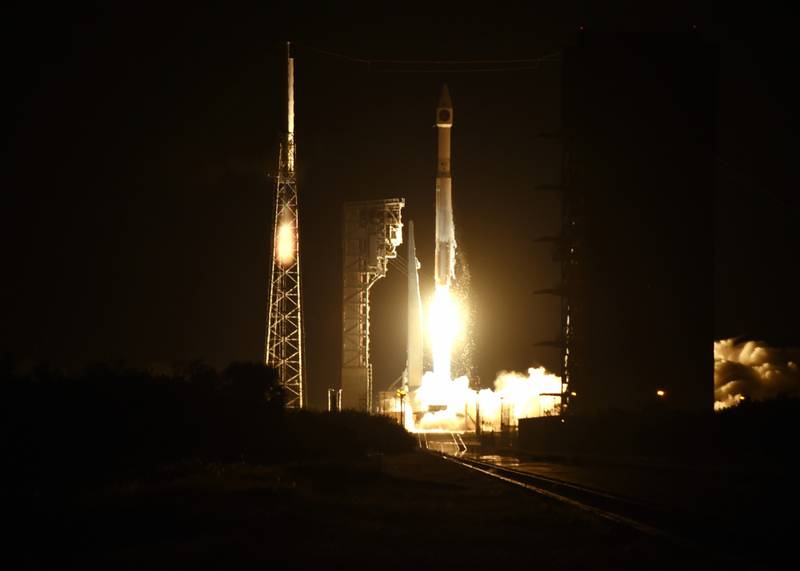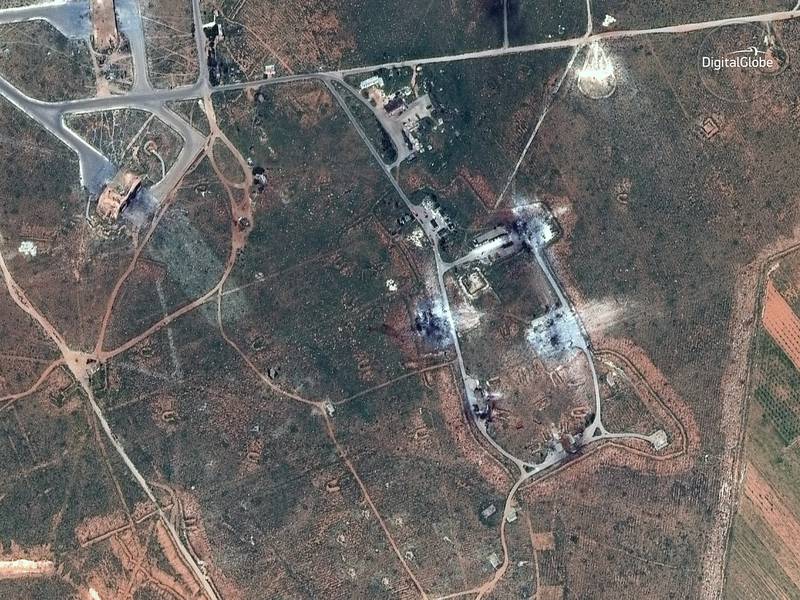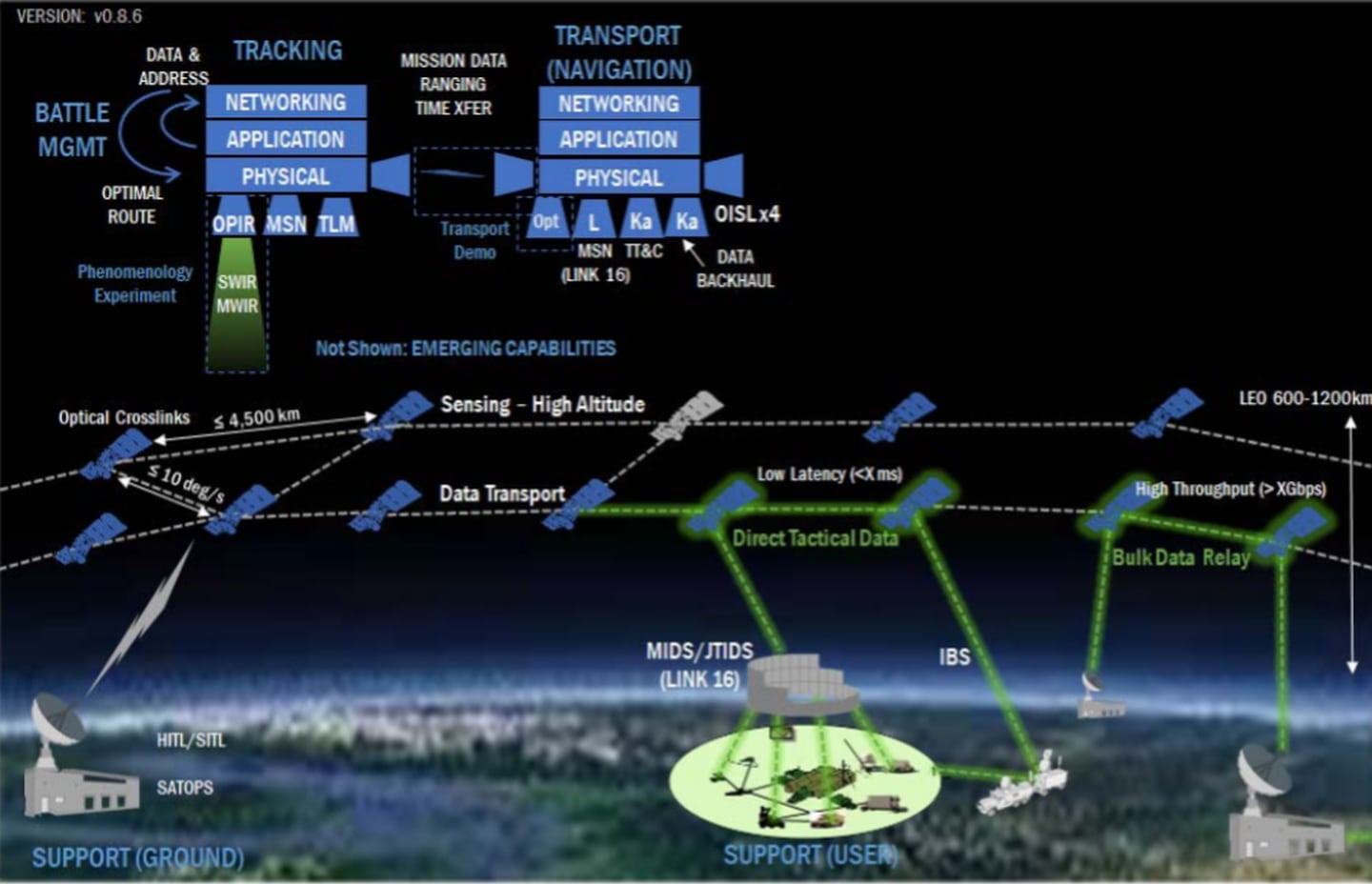The Space Development Agency is seeking proposals for its first batch of satellites, which will make up its initial transport layer — an on-orbit mesh network that will connect space-based sensors with terrestrial shooters.
According to the May 1 solicitation, SDA is looking to award two contracts to build a total of 20 small satellites, which will comprise Tranche 0 of the National Security Space Architecture, a proliferated, low-Earth orbit constellation that will fulfill a multitude of military needs, including tracking hypersonic weapons; providing alternative position, navigation and timing data; delivering beyond-line-of-sight targeting; and more. Ultimately, the agency envisions a constellation made up of hundreds of interconnected satellites.
Ten of those Tranche 0 satellites will form the agency’s initial transport layer.
RELATED

The spiral development approach
The agency is taking a spiral development approach to its National Security Space Architecture. Tranche 0 will be a testing and training segment that will demonstrate the integration of the architecture with other war-fighting efforts and inform future SDA developments.
Tranche 0 is anticipated to be on orbit in the fourth quarter of fiscal 2022, with the SDA adding new tranches of satellites every two years, increasing the constellation’s size and capabilities.
Launch services will be acquired through the Orbital Services Program 4 contract or follow-on contracts.
The philosophy behind the spiral approach is that the two-year cycles allow the agency to rapidly put new capabilities on orbit in response to evolving threats. Instead of waiting years for the perfect satellite system, the agency wants to push technologies that are currently ready into orbit as soon as possible, giving war fighters increased capabilities in the near term.
With Tranche 0, the SDA wants to achieve periodic, regional, low-latency data connectivity. With Tranche 1, which will add 150 satellites to the constellation, the agency plans to provide persistent regional connectivity.
Building a mesh network
The National Security Space Architecture will be made up of several layers serving different functions. Tranche 0 will establish the transport layer, a space-based mesh network that will be able to pass data from one satellite to the next. The mesh network will operate as part of the Integrated Broadcast System, the Defense Department’s standard network for transmitting tactical and strategic intelligence and targeting data.
The key technology that will enable the transport layer are optical inter-satellite cross links, providing approximately 1 Gbps connections between the satellites. Each Transport Layer satellite will have four such cross links — forward, behind, right and left — which will allow them to pass data on to the nearest or next-nearest transport layer satellite operating in the same orbital plane.
The satellites will also be capable of cross-plane cross links, meaning they will be able to connect to non-transport layer satellites operating above or below them. Assuming that they also have optical inter-satellite cross links, these non-transport layer satellites would then be able to pass data through the transport layer’s mesh network to another satellite or even to a terrestrial shooter.
For example, it could work like this: A space-based sensor collects imagery that it wants to pass to a ground-based system, but it is not within range of any ground station. No problem. The sensor would pass on that imagery to a transport layer satellite via an cross-plane optical cross link. The data would then bounce from transport layer satellite to transport layer satellite until it arrives above its destination, where it would then be downlinked to an optical ground terminal or distributed to the appropriate weapons system via the Link 16 tactical data network.
In theory, this would allow shooters to receive space-based sensor data in near-real time.
RELATED

Since the SDA plans to continue building on the transport layer in subsequent tranches across multiple vendors, the optical inter-satellite cross links will need to be designed with interoperability in mind. The SDA also wants radio frequency cross links as a backup to the optical cross links.
Tranche 0 will include 10 transport layer satellites — three of which will include Link 16 payloads.

During an April industry day, SDA Director Derek Tournear said this initial, space-based mesh network will form the space network component to the Defense Department’s Joint All-Domain Command and Control enterprise, or JADC2.
“The transport layer, which is what the draft [request for proposals] and the industry day was talking about today, is going to be the unifying effort across the department. That is going to be what we use for low-latency [communications] to be able to pull these networks together, and that, in essence, is going to be the main unifying truss for the JADC2 and that effort moving forward. That is going to be the space network that is utilized for that,” Tournear explained.
The agency has six goals for its Tranche 0 transport layer:
- Demonstrate low-latency data transport to the war fighter over the optical cross link mesh network.
- Demonstrate the ability to deliver data from an external, space-based sensor to the war fighter via the transport layer.
- Demonstrate a limited battle management C3 functionality.
- Transfer Integrated Broadcast System data across the mesh network to the war fighter.
- Store, relay and transmit Link 16 data over the network in near real time.
- Operate a common timing reference independent of GPS.
According to the request for proposals, the SDA plans to award a contract Aug 10, with delivery expected by July 31, 2022. Responses to the solicitation are due June 1.
Nathan Strout covers space, unmanned and intelligence systems for C4ISRNET.








